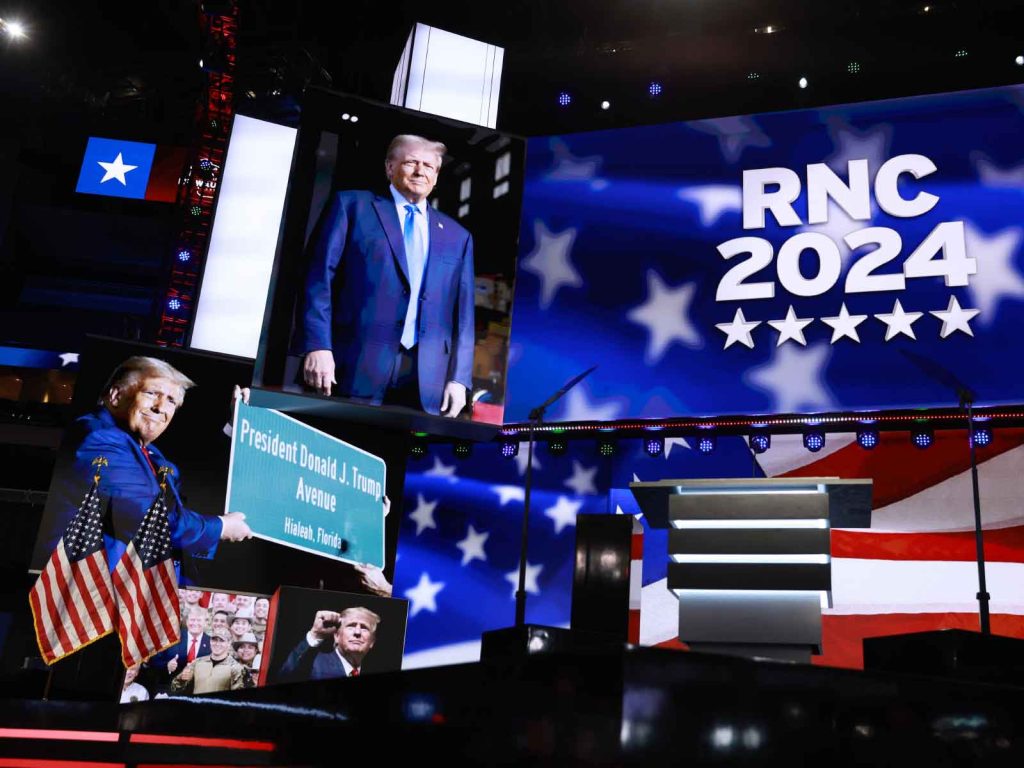
WASHINGTON — When Donald Trump first entered the political arena, few could have predicted the seismic shift he would bring to the Republican Party. Over the course of his presidency and subsequent influence, Trump has managed to mold the GOP in his image, leveraging key moments like the Republican National Convention (RNC) to solidify his control and steer the party’s direction.
A Dramatic Entrance and a New Direction
Trump’s initial foray into the Republican Party came with his 2016 presidential campaign, which defied all conventional political wisdom. His blunt rhetoric, populist messaging, and outsider status resonated with a significant portion of the electorate, upending the traditional GOP platform. The 2016 RNC was a pivotal moment where Trump’s influence began to take shape, with the party formally embracing his “Make America Great Again” slogan and platform.
The 2020 RNC: A Showcase of Trump’s GOP
The 2020 Republican National Convention further cemented Trump’s influence over the party. Unlike previous conventions, which featured a mix of rising stars and established figures, the 2020 RNC was dominated by Trump’s allies and family members. The messaging was clear: this was now Trump’s Republican Party.
Key themes of the convention included a strong emphasis on law and order, economic nationalism, and a staunch defense of Trump’s handling of the COVID-19 pandemic. Speakers repeatedly underscored loyalty to Trump and his vision for America, signaling a departure from the more traditional conservative principles that had previously defined the GOP.
Consolidation of Power
Trump’s ability to consolidate power within the Republican Party can be attributed to several strategic moves:
- Loyalty Tests: Trump has consistently emphasized loyalty, rewarding allies and punishing dissenters. This has created a party culture where allegiance to Trump often supersedes traditional policy stances or ideological purity.
- Primary Endorsements: Trump’s endorsements in Republican primaries have had a significant impact. Candidates endorsed by Trump often find themselves with a substantial advantage, further aligning the party with his brand of politics.
- Grassroots Mobilization: Trump has maintained a strong connection with the party’s base, utilizing rallies and social media to keep his supporters engaged and active. This grassroots support has proven critical in maintaining his influence within the GOP.
- Control of Party Machinery: By placing loyalists in key positions within the Republican National Committee and other party structures, Trump has ensured that the party’s machinery supports his agenda.
The Impact on Policy and Identity
The shift in the GOP under Trump’s leadership has had profound implications for both policy and party identity. Traditional Republican stances on free trade, foreign policy, and fiscal conservatism have been replaced or redefined by Trump’s priorities. The party has moved towards a more nationalist, protectionist, and populist stance, reflecting Trump’s own views.
On issues like immigration, the environment, and healthcare, the party has adopted more hardline positions, often mirroring Trump’s rhetoric and policies. This transformation has not been without controversy, leading to internal divisions and debates about the future direction of the GOP.
Challenges and the Path Forward
As Trump continues to play a central role in the Republican Party, questions about its future remain. The party faces the challenge of balancing the demands of Trump’s base with the need to appeal to a broader electorate. The outcome of this balancing act will likely shape American politics for years to come.
In conclusion, Donald Trump has fundamentally reshaped the Republican Party, using platforms like the Republican National Convention to consolidate his control and push the party in a new direction. His influence remains a defining feature of the GOP, with far-reaching implications for its policies, identity, and future trajectory.




